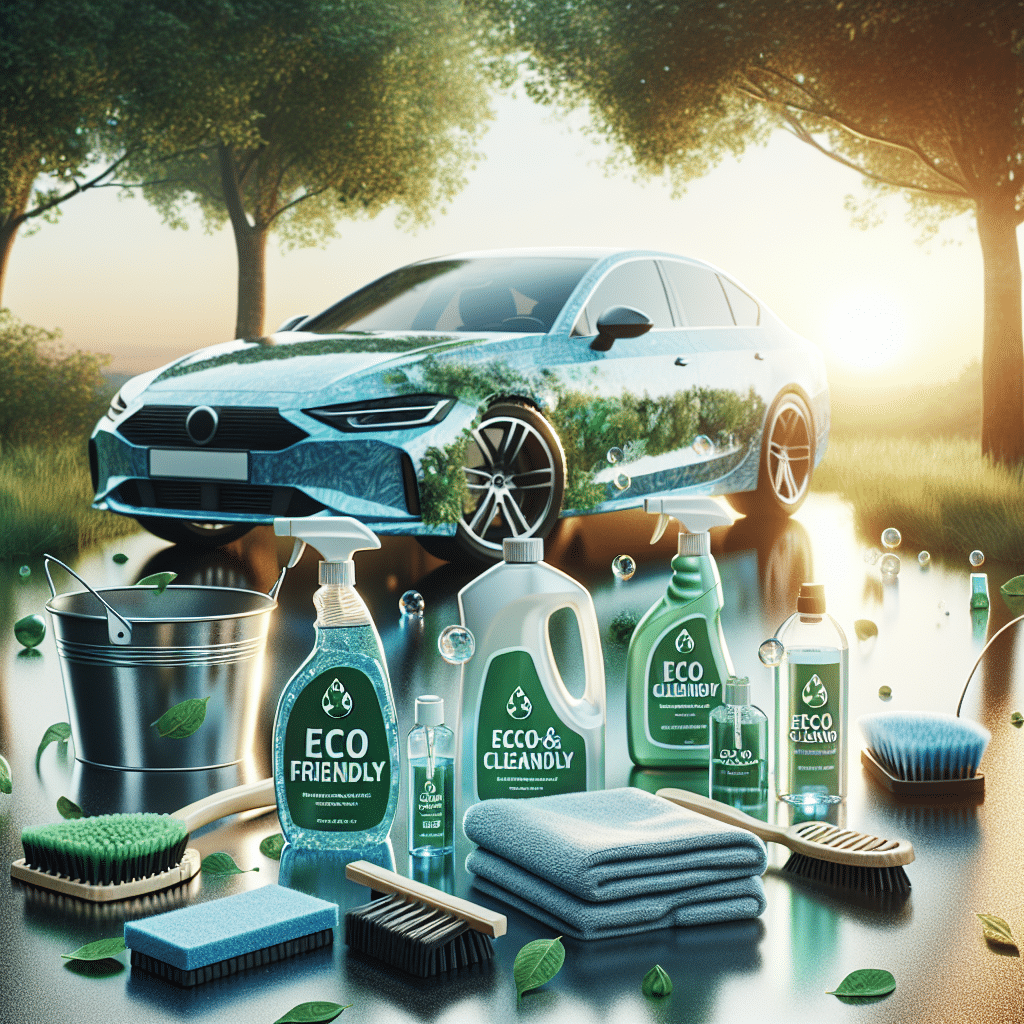EV Cleaning and Detailing Tips: The Complete Guide to Maintaining Your Electric Vehicle
Understanding Electric Vehicle (EV) Materials
Before diving into the cleaning and detailing techniques for electric vehicles (EVs), it’s essential to understand the unique materials used in their construction. EVs often feature specialized paint, plastics, and interiors designed for longevity and efficiency. Knowing these materials helps avoid damage during cleaning.
-
Paintwork: EVs usually boast advanced paint coatings that resist scratches and UV damage. Always opt for pH-balanced cleaners to maintain the integrity of the finish.
-
Glass: With large windshields and side windows, many EVs are equipped with laminated glass for noise reduction. Use non-ammonia-based glass cleaners to avoid damaging the tint or coating.
-
Plastics and Fabrics: Upholstery might vary from vegan leather to recycled materials. Gentle cleansers, microfiber cloths, and steam cleaning are generally safe options.
General Cleaning Tools and Supplies
When tackling the cleaning of an EV, having the right tools is paramount. Here’s a list of must-have supplies for optimal results:
-
Microfiber Cloths: Use these to prevent scratching surfaces while wiping down the vehicle.
-
Soft-bristle Brushes: Ideal for cleaning hard-to-reach areas without risking damage.
-
pH-Balanced Cleaners: Choose eco-friendly and biodegradable options to align with the sustainability ethos of EVs.
-
Wheel Cleaners: Use non-acidic wheel cleaners for alloy or carbon fiber wheels.
-
Vacuum Cleaner with Attachments: Opt for one with a HEPA filter to remove dust effectively.
-
Steam Cleaner: This tool helps in deep cleaning interiors without harsh chemicals.
-
Waterless Wash Spray: Perfect for quick clean-ups and enhances paint protection.
-
Detailing Clay Bar: Ideal for removing embedded dirt and contaminants from the paint surface.
Washing Your EV
When washing your electric vehicle, follow these steps for optimal cleanliness without damage:
-
Preparation: Park your vehicle in a shaded area to avoid water spots caused by evaporation. Gather all cleaning supplies to minimize movement.
-
Pre-Rinse: Use a hose or pressure washer to rinse off larger contaminants like dust, mud, or leaves.
-
Two-Bucket Method: Fill one bucket with soapy water (using a pH-balanced soap) and the other with clean water for rinsing. This method reduces the chance of scratching the paint.
-
Washing: Start at the top and work your way down. Use a soft sponge or mitt, rinsing it frequently in the clean bucket to avoid reintroducing dirt.
-
Wheels Last: Clean the wheels separately with a dedicated cleaner and soft-bristle brush to avoid cross-contamination of brake dust onto the paint.
-
Rinse Thoroughly: Ensure all soap is rinsed away to prevent residue buildup, which can dull the paint.
-
Drying: Use microfiber drying towels or a dedicated drying cloth to wipe down the vehicle, absorbing water and preventing spots.
Interior Cleaning
For the interior of your EV, follow these detailed steps:
-
Vacuuming: Start by vacuuming carpets and seats. Make sure to use specialized attachments to reach tight spots.
-
Dusting: Use a microfiber cloth to dust the dashboard, center console, and door panels. Pay attention to vents and controls.
-
Upholstery Cleaning: For fabric seats, consider a fabric cleaner or steam cleaner to dislodge stains. For leather or vegan leather surfaces, use a dedicated cleaner and conditioner to keep the material supple.
-
Glass Treatment: Clean windows and mirrors using a non-ammonia glass cleaner, ensuring crystal-clear visibility.
-
Deodorizing: Use an odor-neutralizing spray or diffuser with essential oils to keep the interior smelling fresh.
Engine Bay and Battery Area
Cleaning the engine bay and battery area requires caution:
-
Safety First: Always ensure the vehicle is powered off and consult the owner’s manual for specific cleaning instructions related to the battery area.
-
Dry Cleaning Methods: Use a soft brush and compressed air to remove dust without moisture. Avoid spraying water directly.
-
Wipe Down surfaces: Use a damp microfiber cloth for cleaning plastic covers or metal surfaces gently.
-
Check for Leaks: While cleaning, monitor for any signs of fluid leaks or corrosion, and address them promptly.
Detailing Tips
To maintain the pristine look of your EV, regular detailing is crucial. Consider incorporating these professional tips:
-
Clay Bar Treatment: Use a clay bar twice yearly to remove embedded contaminants that washing alone won’t eliminate.
-
Paint Protection: Apply a high-quality wax or paint sealant once every three to six months for added protection against the elements.
-
Ceramic Coating: For enthusiasts, consider professional installation of a ceramic coating to provide long-lasting protection and ease of maintenance.
-
Headlight Restoration: Use a headlight restoration kit to maintain clarity. This improves visibility and gives the vehicle a fresh look.
-
Battery Care: Ensure the cooling systems for the battery remain clean, effectively enhancing performance and charging efficiency.
Environmental Responsibility
As an EV owner, it’s vital to adopt eco-friendly practices while cleaning and detailing:
-
Water Conservation: Utilize methods such as a waterless wash or spot cleaning to reduce water wastage.
-
Biodegradable Products: Opt for cleaning agents that are non-toxic and environmentally safe.
-
E-Waste Management: Dispose of any spent cleaning products or worn-out tools responsibly to minimize ecological impact.
By maintaining your electric vehicle through proper cleaning and detailing techniques, you not only ensure its longevity but also uphold its aesthetic appeal. Following these expert tips and practices will optimally enhance your EV experience while aligning with environmental consciousness.
